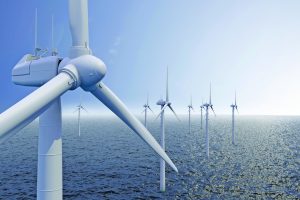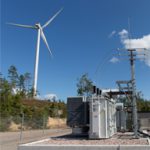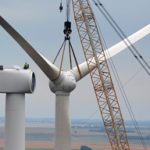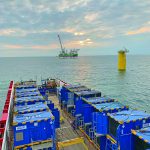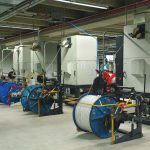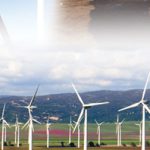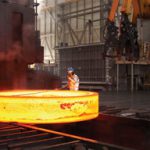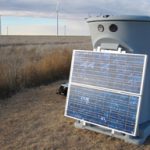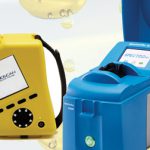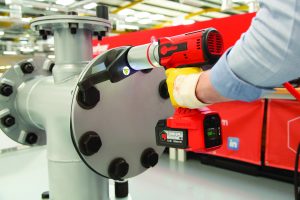Before Clobotics President George Yan began his company, he recalls visiting a wind farm and being surprised at what he saw.
“I saw this fellow in his late 50s,” Yan said. “And he essentially had a couple of straps on his waist, and he was climbing up the wind turbine. We watched him climb up about 60 meters high, and he was using binoculars and a mobile phone to find cracks in the turbine blade. That was a pretty mind-boggling experience for me, thinking that with all the advanced technology we have, a person is still doing this crazy dangerous job of climbing up this height to do visual inspections.”
From that epiphany — along with the combined brain power and inspiration from Yan’s engineering associates — Clobotics was created with the goal of using autonomous drones and other advanced technologies to automate the inspection of wind turbines and minimize the high-risk nature of the task.
“The entire wind power industry is going through a digital transformation, especially in the operations and maintenance (O&M) market, and that’s an area that we focus on,” Yan said. “Today, the O&M market is a $25 billion market. But there is still very little technology, very little data provided for its decision making. For us, inspecting the wind-turbine blades to identify where the cracks are and how we can fix them is really the first step in helping the entire industry to transform.”
Beyond drones
Clobotics’ Smart Wind solution goes beyond just drones, although drone technology is a big part of it, according to Yan.
“A lot of technologies must come together nicely to solve the specific challenges around wind-turbine inspections” he said. “For example, to do what we do, one must have a team of people who really understand hardware. Clobotics’ team of engineers also has very deep automation expertise. That’s important because we don’t want wind-farm operators to have to rely on a highly-trained pilot to fly the drones for each inspection — we want to make everything autonomous and easy for them. Additionally, you need people who understand computer vision, because, in order to make sure we don’t prepopulate the flight routes, while at the same time still capturing very precise images, it requires very sophisticated, real-time computer vision tracking technology.”
Clobotics gave “brains” and “eyes” to its drones, so the drones can see where the blades are as they fly and determine how to keep the blade within the center of the onboard camera and capture high-resolution photos in the air. Only then, the cracks and damages in the blades as small as 1mm-by-3mm can be easily identified. This level of sophistication requires expertise in both hardware and software.
“Finally, as all the data gathered from the visual inspections is stored and analyzed in the cloud, you need people who understand deep learning and cloud computing, and who are able to bring all these technologies together,” he said. “When you consider all these factors, it takes a pretty special group of people to solve this challenge. From an industry insider perspective, one might think that visual inspections would be a pretty simple problem to solve, but the technology behind it is actually very complicated, especially because we make sure our services can scale to meet the needs of some of the largest wind-power operators in the world.”
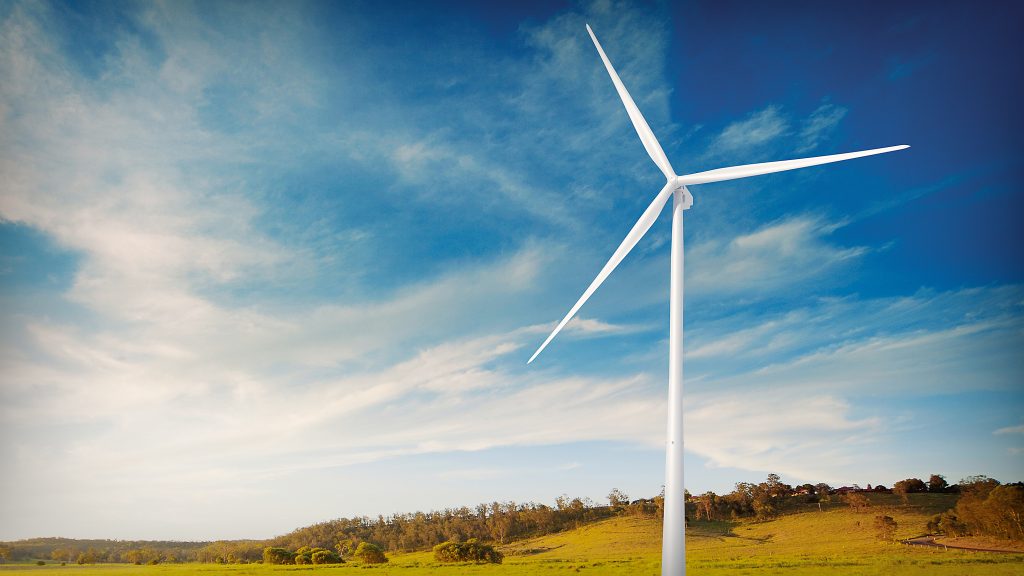
Constantly learning
Because Clobotics has customers in Asia and Europe and is now expanding into North America, Yan said the company’s drones are making many flights and are learning a lot about how cracks form in turbine blades.
“As we gather data about how the cracks progress, and then overlay that with information such as climate data, terrain information, and the amount of rain and lightning hitting that area, we begin to get a very interesting time lapse of how these cracks evolve and how that compares to the output of electricity each turbine is producing,” he said. “This is where I believe, with the vast amounts of data we gather, we can provide very precise predictive maintenance capabilities to the industry, helping wind farms achieve greater efficiencies and better maintain their turbines. I believe that green energy is going to grow, and by helping digitize the industry, we are not only helping wind-farm operators, but also helping the population in general.”
Clobotics partners with DJI and uses that company’s hardware frame for the drones, according to Yan, but Clobotics customizes everything that the drone carries in order to inspect a turbine.
“Everything from the gimbal to the firmware of the camera, to the solid-state Lidar that we put on the drone itself, everything has been customized, and we write the firmware to make sure everything comes together,” he said. “The goal is to be able to hand off the entire product to the operator.”
Totally autonomous inspection
Indeed, Yan said all an operator needs is a relatively simple training session. After that, the operator can bring the drone under the wind turbine, and with one push of a button, the drone is able to track the wind tower up its center axis.
“It doesn’t matter what the position of the blade is; it’s able to find its center axis and follow the first blade,” he said. “It does the entire inspection autonomously without any interference from that person at the tower and is able to complete the entire flight in under 25 minutes.”
Once the drone returns, the data is automatically uploaded to the cloud, according to Yan. That data includes a range of 300 to 400 photographs, which are automatically stitched together using machine learning. Once the data is uploaded to the cloud, a wind-farm operator can log-in to their customer portal to see that specific turbine and inspection data indicating cracks or other damage in the blades.
“Each of the pictures has been analyzed and labeled by our machine learning algorithms to help the operator quickly identify exactly where the cracks are located so a technician can more easily fix them,” Yan said. “We also create an end report to help with the repair.”
Multiple-location advantage
Clobotics has an advantage in the industry since it has teams to serve multiple countries around the world, according to Yan.
“We started these services in China,” he said. “We work with the biggest wind-turbine operator in the world, China Longyuan Power Group. They have more than 25,000 turbines under their care. From a data perspective, no one has more wind-turbine data than we do. With our expansion into Europe and the U.S., we now have another large set of data that we are able to cross match and identify what patterns are happening in each of the continents. With that type of geo-global data, we are able to see trends and can help the industry be more precise.”
Real customers, big customers
Having China’s vast number of turbines to work with has helped Clobotics establish itself in the short time it has been in business, according to Yan.
“Having real customers under our belt is something that we’re super proud of,” he said. “Our biggest customer is the biggest wind operator in the world, China Longyuan Power Group. We work very closely with them. We also work with Shanghai Electric, the biggest offshore wind-turbine OEM and operator in China. Although as a company we were established only two years ago, because of the depth of expertise and technology that we provide to the market, we’ve been able to dance with the biggest players. Our customers not only use our services but are also very good about giving us feedback and pushing us to the technology limit. I believe this is where our engineering team is being acknowledged by the biggest players in the market.”
Offshore challenges
As more offshore wind takes off, Yan said the inspection of those turbines is going to be a challenge, but he expects Clobotics to meet that challenge head on.
“Offshore turbines are actually a different level of challenge,” he said.
By not having a person available to climb up a tower as in onshore, inspection becomes more difficult. Also, with offshore turbines being much larger than their onshore counterparts, the timing of inspections also becomes more challenging, according to Yan. In order to overcome that challenge, Yan said Clobotics has been tweaking its algorithms to allow for multiple flights during inspections.
“Today, the time we spend on turbines is around 25 minutes, and that’s gated by the battery power limit of the drone from DJI,” he said. “When the turbine gets too big, there’s no way you can do the full inspection in one 25-minute flight.”
When it comes to large, offshore turbines, the Clobotics Smart Wind drone inspects two blades, then returns for a battery swap. Leveraging built-in artificial intelligence (AI), the drone is able to automatically return to its previous position to finish the rest of the turbine, according to Yan.
“These are the very important and very detailed technology challenges that we face and that we are overcoming,” he said. “And that’s what’s needed to provide a production-level service for the offshore wind power companies. We are doing this not only in China today, but also with an offshore operator in Copenhagen, Denmark. More recently, we also have opportunities to do this in Taiwan and other places. The offshore industry is an area we will definitely be focused on, helping them increase productivity just as we have done for the onshore providers.”
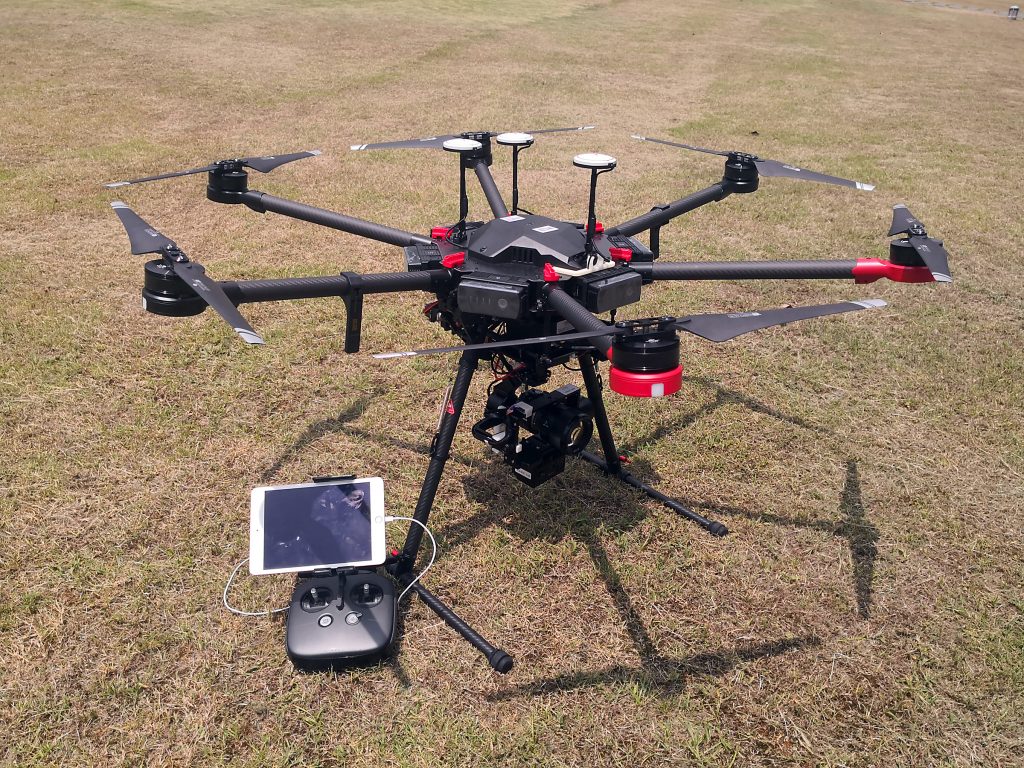
‘A melting pot’
Clobotics prides itself in being a multicultural company, according to Yan.
“One of our strengths is that we are located in both Shanghai as well as Seattle,” he said. “We are excited about solving long-standing challenges in a global industry, and we love applying our technology solutions across the world. That’s where we stand out. We started that from the very first day of building the company, having folks in multiple locations, with much of our engineering talent and computer vision machining engineers in Seattle while some of our application engineers and our sales and marketing guys are in China. Our company is truly a melting pot, which enables us to solve problems faster for our global customers.”
Clobotics is comprised of passionate and experienced engineers who brought a wealth of expertise to the two-year-old company. For example, Yan spent 16 years with Microsoft before joining Ehang, a drone startup company, which is where he first experienced using drones in commercial fields.
Quick expansion
Clobotics’ relationship with Chinese companies has enabled the company to expand quickly, according to Yan.
“We tailor our services to our customers in different areas,” he said. “For example, the wind-power providers in China are a little bit more adventurous. They’re open to trying new technologies and techniques.”
Because Chinese companies are open to exploring more leading-edge technologies, Clobotics gets invited to test new solutions on their wind farms, according to Yan.
“We’ve found the China market to be a very nice sandbox for us with some of the local wind farms,” he said. “That’s very helpful, because wind-farm operators are not often able to allocate turbine downtime for tests. In contrast, when we work with European companies, we make sure our solutions are ‘squeaky clean’ and without any bugs because expectations there are higher for service solutions like ours.”
That bug-free approach for European and U.S. companies is often more lucrative for Clobotics, as well, according to Yan.
“We have experienced a lot of success by taking a multi-stepped approach where we use the Chinese market to test and really polish our solutions, then applying our thoroughly tested solutions in Europe and North America,” he said. “This approach works well because the scenarios we encounter with our large customers in China are extremely complicated. If we are able to fix any problems in those scenarios, then we are certainly able to serve customers anywhere around the globe, no matter what their unique needs are.”




















